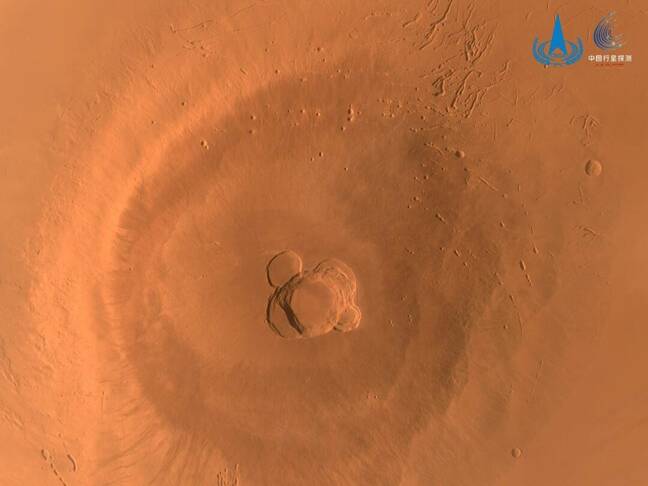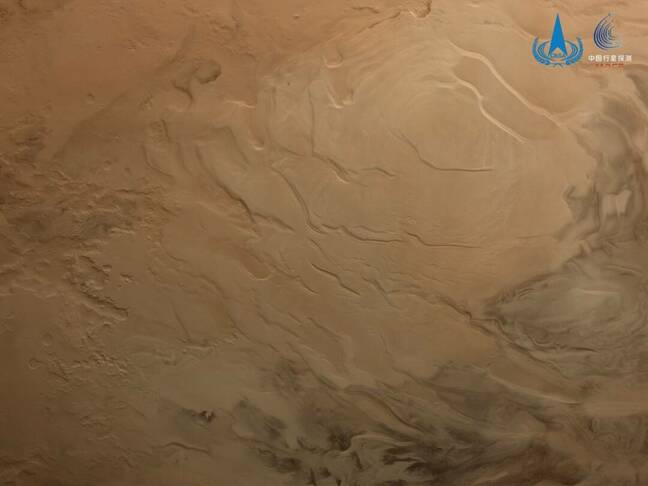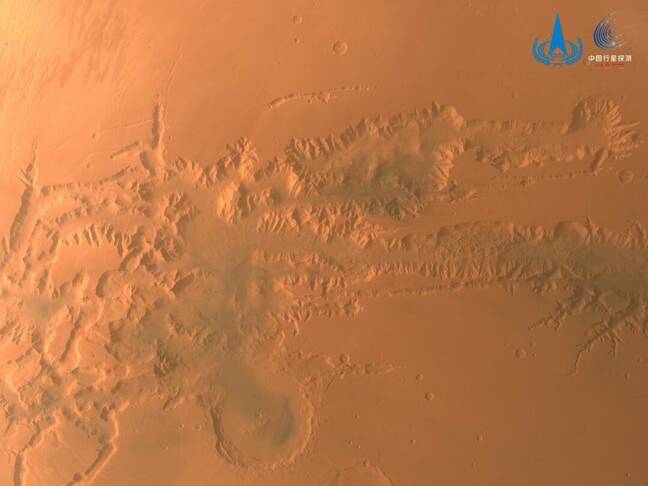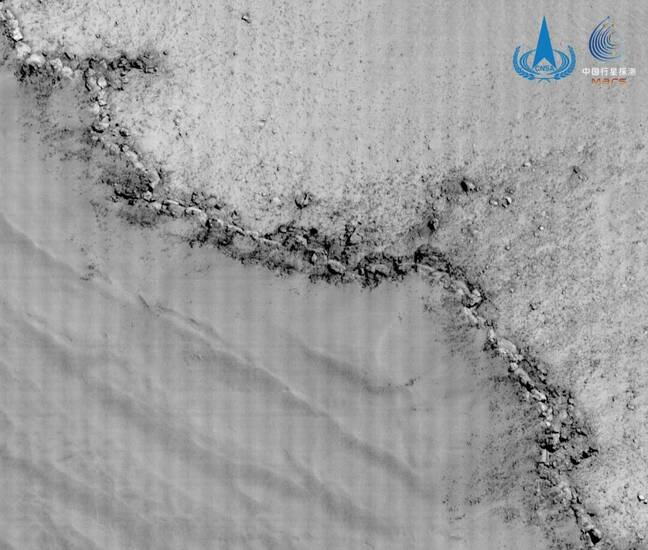This article is more than 1 year old
China says it has photographed all of Mars from orbit
Enjoy the slideshow from Tianwen's orbital adventures
China is claiming that as of Wednesday, its Tianwen-1 Mars orbiter has officially photographed the entire Red Planet. And it's shown off new photos of the southern polar cap and a volcano to prove it.
"It has acquired the medium-resolution image data covering the whole globe of Mars, with all of its scientific payloads realizing a global survey," state-sponsored media quoted the China National Space Administration (CNSA) announcing.
Among the images are one of Ascraeus Mons with its crater, shots of the South Pole whose ice sheet is believed to consist of solid carbon dioxide and ice, the seven-kilometer deep Valles Marineris canyon, and the geomorphological characteristics of the rim of the Mund crater.
Tianwen-1 had been in orbit around Mars for 706 days. The orbiter circled Mars 1,344 times, as of an announcement from CNSA. The space org said Tianwen-1 has completed its scheduled missions.
In conjunction with its rover Zhurong, Tianwen-1 amassed 1,040 gigabytes of raw scientific data through 13 onboard scientific payloads.
The mission has allowed CNSA to observe solar occultation and solar wind together with international observatories – including those in Russia, Germany, Italy, Australia and South Africa – to improve the accuracy of space weather forecasts. Good news for Matt Damon.
- Watch the moment China's Zhurong rover lands on Mars, hear it truckin' for the first time
- China successfully launches its biggest-ever space truck to fire up its space station ambitions
- Perseverance Mars rover sets off on its first mission, to boldly drill and return samples as no rover has drilled before
CNSA said it will share more scientific data with the international community in due course.
In December, Zhurong and the European Space Agency's Mars Express spacecraft performed an in-orbit relay communication test to demonstrate it was possible to relay data from Zhurong back to Earth via Mars Express. The demonstration was successful, if a bit complicated – Mars Express had to "listen" for Zhurong since the rover was unable to communicate directly because the frequencies used don't match.
Even though the mission is officially over, the orbiter and rover are still in working order. The orbiter will stay in orbit and continue its remote sensing and data relay activities while Zhurong will hibernate until weather conditions improve – likely in December. ®




